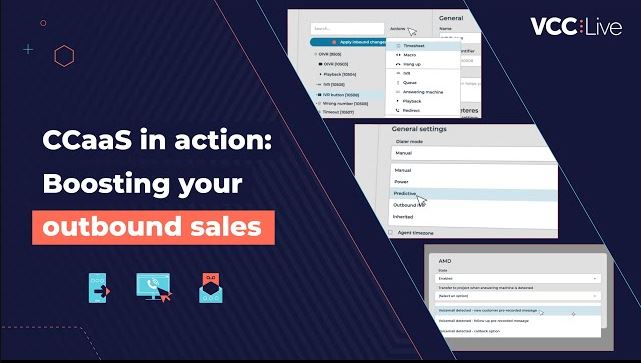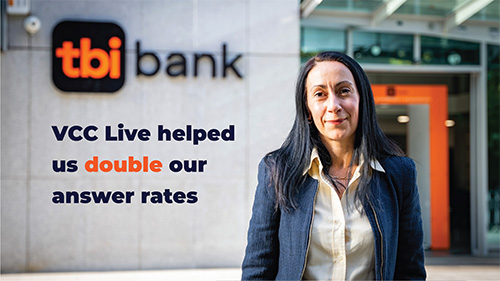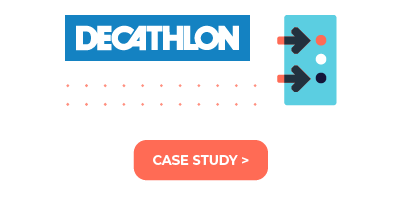Replacing Transfer Process
Estimated reading time: 7 minutes | Target users: Supervisors
The Transfer process was removed from the list of available inbound processes.
If you have been using the Transfer process in your inbound workflow, you need to replace the Transfer process with alternative processes, so that you can continue using your current project without interruption.
In this lesson, you will learn:
- What inbound processes are
- How to replace the Transfer process in your inbound workflow
Recommended knowledge:
- Intermediate knowledge of managing inbound projects in VCC Live
1. About Inbound Processes
An inbound process is a set of actions, functions, automations or conditions that allow you to define how your clients can interact with your call or contact center, for example via IVR.
For more details about available inbound processes, see Inbound Processes.
1.1 Accessing the Inbound Settings Interface
- Select a project, then select Channels > Inbound.
- Open the Actions menu to see the available inbound processes.
Tip: You can view your inbound processes used for each project by navigating to VCC Live menu > Contact Center > Inbound processes.
1.2 Which Transfer Types are Deprecated?
There were three Transfer types available in VCC Live, and all of them are deprecated. You can replace them with more versatile and useful processes as described below.
2. Replacing the “Transfer (Deprecated) -> Jump to process” Workflow
The Transfer process -> Jump to process workflow now can be replaced with setting up the Jump and Label processes. In this case, Jump should be set where the Transfer used to be, and the direction of the Jump is indicated by the Label.
2.1 To Set Up the Jump and Label Processes
- Select a project, then select Channels > Inbound.
- On the Processes tab, select an existing Timesheet or create a new one.
- From the Actions dropdown menu, select Label.
- Set up your Label process by renaming it and adding notes. Processes listed below the Label process will be executed.
- Select your Timesheet again, then from the Actions dropdown menu, select Jump.
- Set up your Jump process by renaming it, adding notes and selecting the Label process you have just created.
Note: Setting up both a Jump and a Label process for the desired action is mandatory.
3. Replacing the “Transfer (Deprecated) -> Jump from phone number to process” Workflow
The Transfer process -> Jump from phone number to process workflow now can be replaced with the Switch process. With Switch, several parameters can be added (such as phone numbers), which then can be set up to different processes, independent from each other. Switch operates with one default case and several other cases.
3.1 To Set up the Switch Process
- Select a project, then select Channels > Inbound.
- On the Processes tab, select an existing Timesheet or create a new one.
- From the Actions dropdown menu, select Switch.
- Open this Switch process with the small triangle icon next to it.
- Here you can see that an empty Default case has been created for your Switch process. You can set up further processes under the Default case to make it work. Default case means all processes that are not nested under Case.
- Step back to the Switch branch, then select Actions > Case. You can also create further cases with conditions and processes for the cases. Case examines if a condition set in the Case process is met. If it is, then the processes nested under the Case process are executed.
Note: If none of the conditions set in any Case process are met, the processes nested under the Default case process are executed.
Tip: The most commonly used variables for Switch when setting up phone numbers are $source (Caller number) and $destination (Called number).
4. Replacing the “Transfer (Deprecated) -> Proceed as per the defined variable” Workflow
On this occasion, an If process replaces the deprecated Transfer process. An If process evaluates only one variable as per a defined condition provided by the user. When the If process returns ‘true’, processes listed below the Then process are executed. When the If process returns ‘false’, processes listed below the Else process are executed.
4.1 To Set up the If Process
- Select a project, then select Channels > Inbound.
- On the Processes tab, select an existing Timesheet or create a new one.
- From the Actions dropdown menu, select If.
- On the If settings page under Parameters, you can create one or more conditions for variables. (Additional conditions can be created by pressing the Add button.)
- Click on the small triangle icon next to the If process.
- You will see the Then and Else sections, where you can set up processes under each of them.
Tip: You can cut and paste processes using the right-click menu’s Cut and Paste functions.
Congratulations!
You’ve just learned how to replace Transfer processes in the VCC Live application.








Comments
Can’t find what you need? Use the comment section below to connect with others, get answers from our experts, or share your ideas with us.
There are no comments yet.